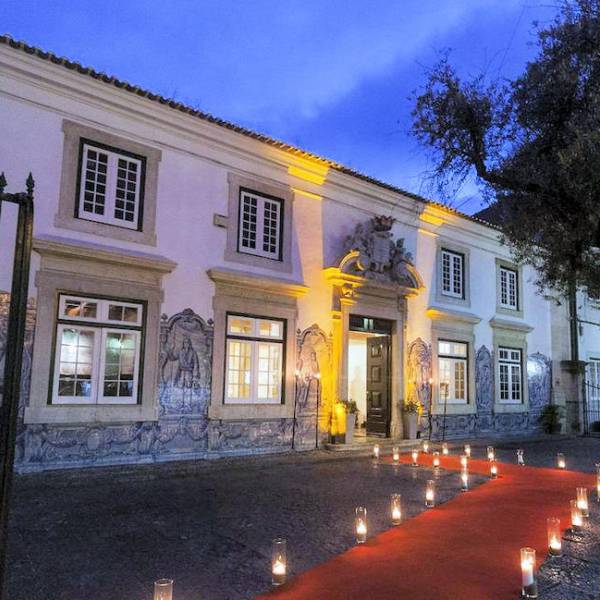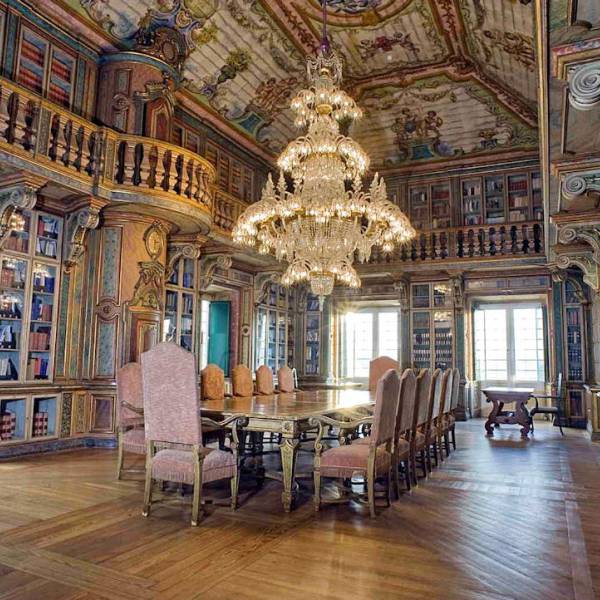The Condes de Óbidos Palace is a visual marvel, exuding grandeur and elegance in its architectural design. The entrance, adorned with a supra-crowned coat of arms, pays homage to the noble heritage of its inhabitants. As visitors step inside, they are greeted by a symphony of decorative elements, including captivating frescoes and exquisite azulejo panels. These ornate blue and white ceramic tiles, meticulously crafted by Colonel Vitória Pereira, depict scenes of nobility, courtly life, and mythological tales. Each panel tells a story, inviting guests to delve into the artistic and cultural heritage of the palace.
Within Palácio dos Condes de Óbidos, the atrium serves as a captivating gateway to further exploration. Adorned with busts of King D. Luís I and Queen D. Maria Pia, both patrons of the Portuguese Red Cross, the atrium leads to the magnificent library. Reconstructed in the 1930s under the guidance of Afonso de Dornelas, the library emanates an air of refinement and intellectual pursuit. A magnificent crystal chandelier, crafted in the renowned Marinha Grande, hangs beneath a painting depicting the Peace of Alvalade. Created by Gabriel Constante, this masterpiece portrays Queen Santa Isabel riding a donkey accompanied by King D. Dinis and their son, D. Afonso IV. The library also showcases the evolution of the palace through the centuries, providing a visual timeline of its storied past.
Lisbon.vip Recommends
Deep within the palace, a hidden gem awaits: the Chapel of Nossa Senhora da Conceição. This sacred space, adorned with ancient azulejos and resplendent in vibrant polychrome hues, is a testament to faith and devotion. Inscriptions etched on beautiful rose marble stones provide glimpses into the noble history and spiritual significance of the chapel, connecting visitors with the past.
Recognized as a Property of Public Interest since 1993, the Condes de Óbidos Palace has embraced its role as a cultural haven. Its magnificent halls and chambers have become venues for social and cultural events, creating opportunities for individuals to appreciate the palace's historical legacy while fostering a vibrant community spirit.
The Condes de Óbidos Palace, an architectural masterpiece that symbolizes the cultural heritage of our beloved Lisbon, has long been a source of fascination and inspiration for me. Its storied history, adorned interiors showcasing exquisite artwork, and its pivotal role as the headquarters of the Portuguese Red Cross all combine to create an enchanting narrative that bridges the past and the present. As visitors meander through its halls and chambers, they are transported to a bygone era, where the echoes of history resonate with the modern world. The Condes de Óbidos Palace serves as an enduring testament to the enduring legacy of art, history, and compassion, offering a window into the remarkable heritage that defines Portugal, a heritage that I'm dedicated to sharing with fellow travelers through my storytelling and travel articles.
Map View





